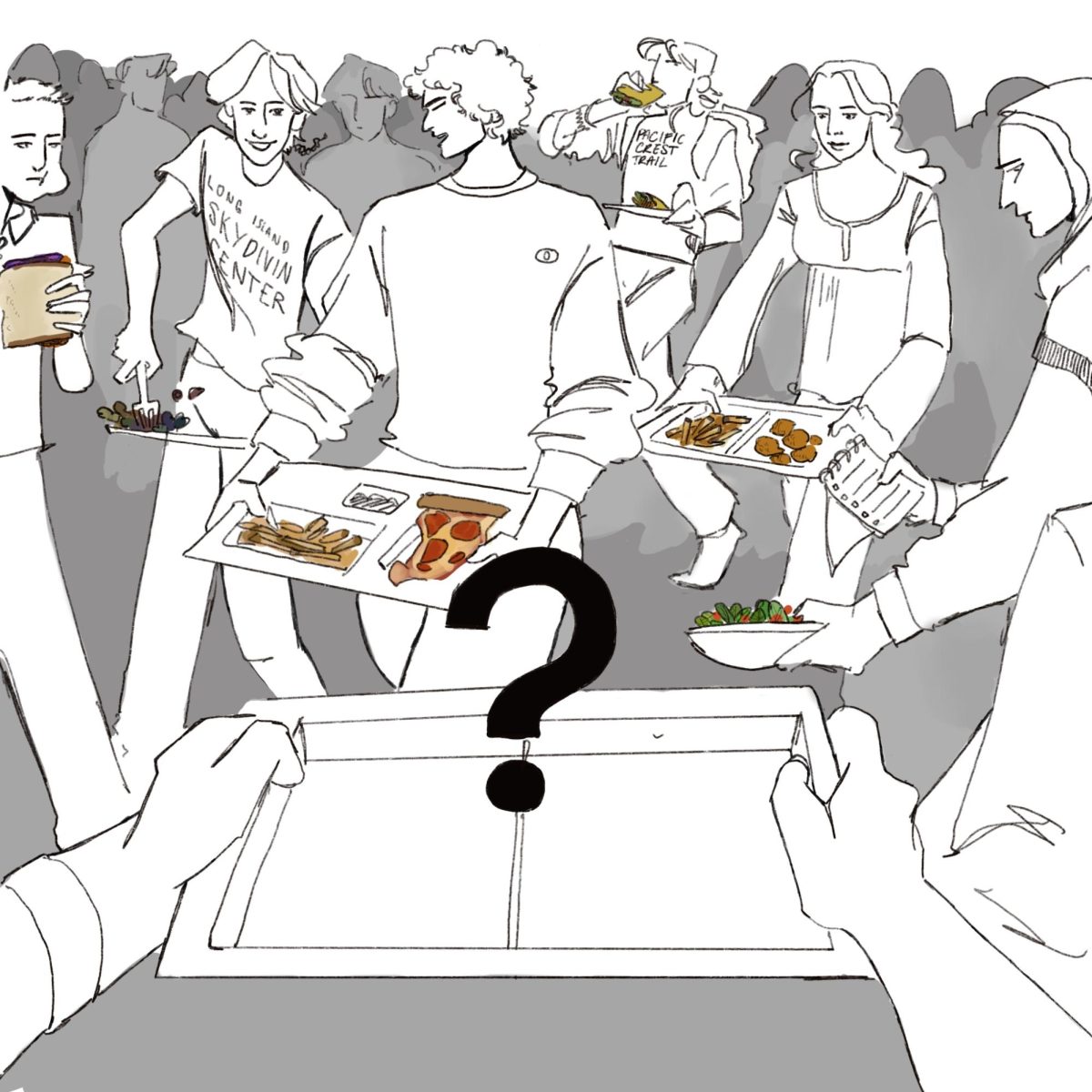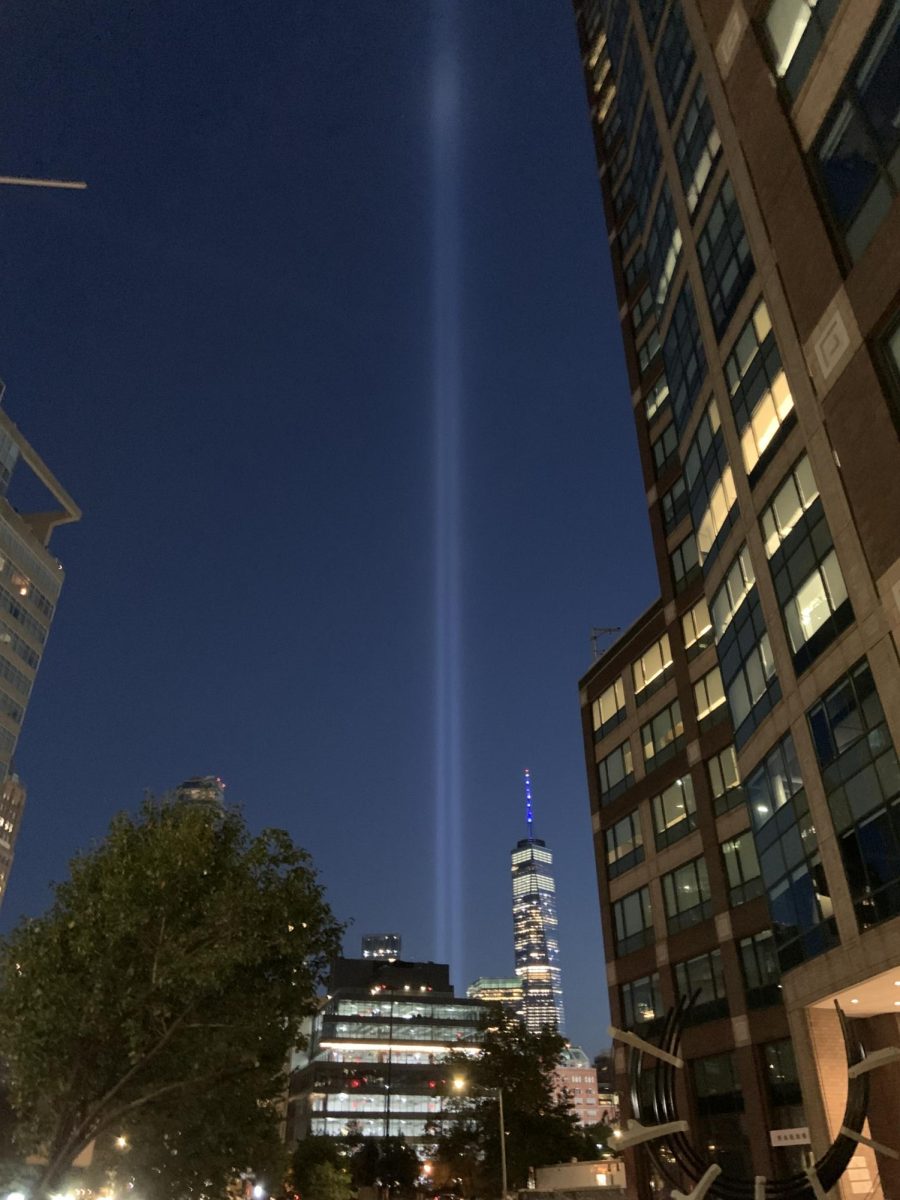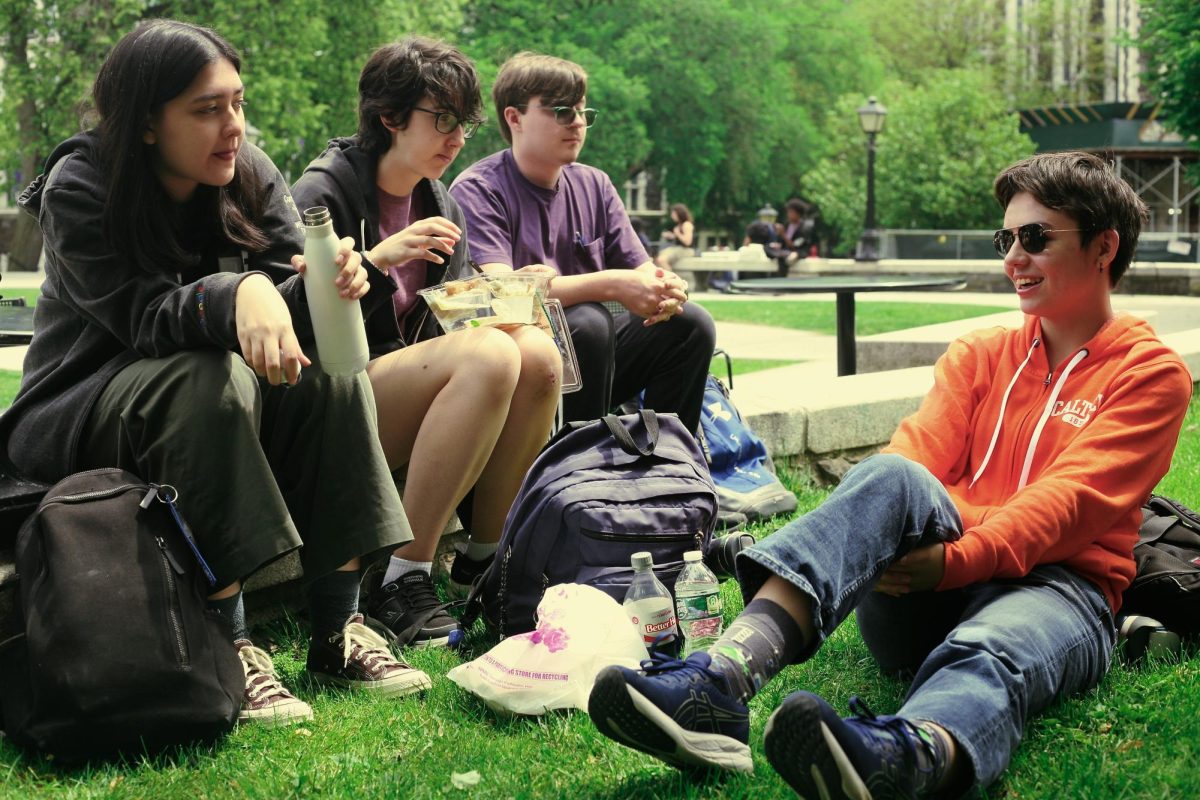Before we contacted them, we weren’t sure if a CCNY student-run newspaper even existed. The newspaper stands scattered around campus have been empty for years, and college students rush from building to building (presumably to avoid coming into contact with lowly high schoolers like us) with empty arms, never pausing to read the newest issue of a paper tailored to student interest. But a quick search on the CCNY website proved the existence of a school newspaper: The Paper, a straightforward (albeit a little boring) name that doesn’t do its publication’s rich past justice.
Looking for more information on The Paper’s history, content, and how to access it, we reached out for an interview. Within the same day, we got a response, and, less than a week later, we sat down to talk with Ryan Bernal Franco and Elizabeth (Liz) Reich, the president and editor-in-chief of The Paper, respectively. But before we dive into that conversation, here’s some background about CCNY’s newspaper.
The Paper has a long history, spanning almost a century and consisting of several revivals and name changes. It was originally established in the early 1930s as Tech News, a newspaper dedicated to the newly created School of Technology. It served as a source for engineering news, job listings, and events until it disappeared in the mid-1940s. It was revived in 1954, and continued to serve as a publication for CCNY’s engineers.
In1970, the Five Demands protests at CCNY sought more resources for Black and Puerto Rican students (check out the Issue 6 article “The CCNY Encampment’s Five Demands Were Nothing New” for more detail). This movement reached Tech News, redefining its focus and purpose. In their words, “The new banner for TECH NEWS, THE PAPER, is the culmination of an effort to produce a responsible Black journal at CCNY. The concept of TECH NEWS has outlived its usefulness. THE PAPER, aka Tech News, will fulfill the purpose of projecting the realities of our world today.” The Paper served as an activism forum for over 50 years: a “Medium For People Of African Descent” (The Paper’s tagline). They shared information about protests, student opinions on current events, poetry, and photography, focused on the perspectives of African-American students.
Today, The Paper has a broader scope, guided by their new tagline: “A beacon of truth for the unheard.” Their articles cover everything from CCNY updates to arts & culture to politics. But, throughout all of its changes, The Paper has preserved the activist spirit it was established with.
Ryan and Liz certainly have. “The founders [of the reformed newspaper, The Paper, including Frances Covington, Louis Reyes Rivera, and Paul Simms] wanted to make sure that we have a platform where students can share their voices and impacts,” Ryan shared. “So we continue to strive for that by empowering student voices, lifting up voices that are not as heard.” Liz agreed. “This school has a large history of minority groups of all sorts, from Jewish students to Arab students to Black students, fighting against oppression and using [The Paper] as a medium to do that. It’s really important to me that we keep that going and keep that spirit alive.”
After scrolling through The Paper’s official website for only a few minutes, it’s easy to see that spirit live on in their publication’s newest articles and stories. It has articles discussing topics like CCNY public safety with respect to pro-Israel and pro-Palestine protests, police brutality and racial profiling, and so much more. The website’s existence tries to combat what Ryan said was the biggest challenge for The Paper today: “Combining the old beliefs and standards and trying to keep those sacred while trying to like, you know, do some new media.” We noticed that while the old issues used to be print papers, the new articles seemed to be exclusively online or in newsletter form. We asked when they made the switch—was it just to modernize—and what prompted them to do so.
“The pandemic, unfortunately,” explained Ryan, which caused CCNY’s campus to shut down and classes to shift to online. With The Paper unable to distribute, and students unable to pick up and read it, printing became impractical, and an unnecessary expense. Following the pandemic, The Paper continued to grow its digital voice, and has since expanded to Instagram and X. “Being able to have different social platforms helps us to just keep up with the times in general, because I feel like now you get your news from social media more [than traditional print].” Now, The Paper is trying to return to its roots in paper and print. “It might be a newsletter form or it might be a newspaper, but we’re definitely trying to get printing at least back to where it used to be so we can continue on that legacy,” Ryan promised. “We love and respect the past, so finding the balance between The Paper’s past and future is crucial.”
We asked Ryan and Liz why they joined The Paper and pursued journalism in general. “I see myself as not a journalist at all,” Ryan admitted. Instead, he sees The Paper as an opportunity to connect with people. He transferred to CCNY during his freshman year, and “really wanted to be part of a community.” He initially applied to be The Paper’s social media manager, and from there, he eventually became president of the organization. Today, he uses his position to continue to work with the rest of leadership and build up The Paper’s voice, both digitally and on paper. On the other hand, Liz joined The Paper as a lifelong writer for her middle and high school newspapers. “I’ve found a lot of writers who wrote like me and thought like me, and it was really encouraging to see these people express themselves so wildly but like, still intelligently and in a funny way,” she explained. “It really inspired me to try that for myself, so I came to The Paper with that in mind.” Both Ryan and Liz agreed that joining The Paper was a wonderful decision, which has given them the chance to express themselves in their own way.
When asked if they had any advice for high school students looking to get involved in a student-run organization, Liz commented: “Just go for it, because you never know until you try. Even if it’s scary and weird, it’s still an amazing opportunity, and people will work with you to help you find your niche.” For any aspiring journalists at HSMSE, she provided extra encouragement. “Journalism has always been really important, and will continue to be really important, so stick with it.” She and Ryan even expressed interest in collaborating with The Echo again in the future. As Ryan put it, “we’re both a part of the same community as a whole. We’re on the same block anyway, so it would be good to collaborate or work together, help out, reach out in any capacity, whether that’s through editing, writing, or social media.”
Sharing a campus, CCNY and HSMSE are intertwined, and The Paper itself has been involved with HSMSE since the beginning. In the article “City College Welcomes City High”, The Paper welcomed HSMSE to campus, and flatteringly predicted that “…in years to come the City College High School [HSMSE] will be ‘one of the top high schools in the nation.’” Sure enough, by 2024 HSMSE was ranked #3 in the state, #36 nationwide. With any luck, HSMSE will continue to live up to The Paper’s expectations, and continue to grow and flourish here on CCNY’s campus.
The Paper has remained an institution at CCNY for over 50 years, and despite the challenges it’s faced, it’s not going anywhere. At the very end of our interview, we jokingly asked if they would be willing to change their organization’s name to something a bit more unique, like The “Dam” Paper since beavers (CCNY’s mascots) build dams. They humored us for a moment, ribbing on their name. “The CCNY paper, creatively named The Paper,” quipped Liz, before getting serious.
“I don’t think the founders would ever let us change it,” explained Ryan, and it’s not hard to see why. The Paper’s name has been a medium for student outreach, school-wide activism, and campus community for so long, and to change the name would be to part with the legacy that they have worked tirelessly to maintain. However, that doesn’t mean that The Paper won’t still continue to develop and grow with the times. Mitchell B. Robinson-Ramirez, writer of “To Educate is to Further the Liberation: Remembering the 1969 Student Protest,” said it best when he wrote: “we are caught in the midst of a process — one that is not nearly completed, but rather existing, waiting for the next vehicle of change.” As ever-evolving student-run news organizations, both The Paper and The Echo exist as vehicles of change in our communities, powered by the constantly changing voices of the students at each of our schools. It’s what both publications have been since their foundings, and we hope that spirit will continue long after we (Ryan and Liz included) leave this campus.
























